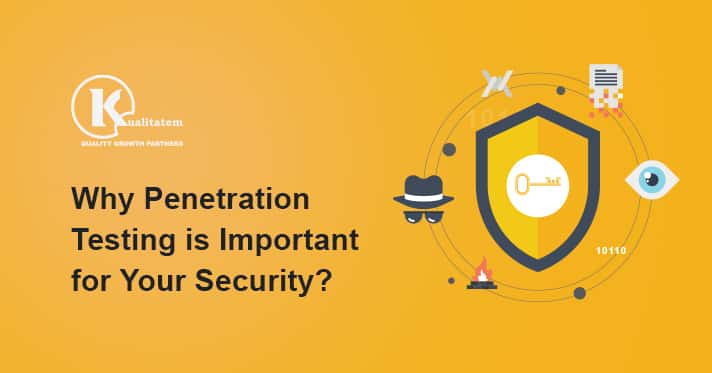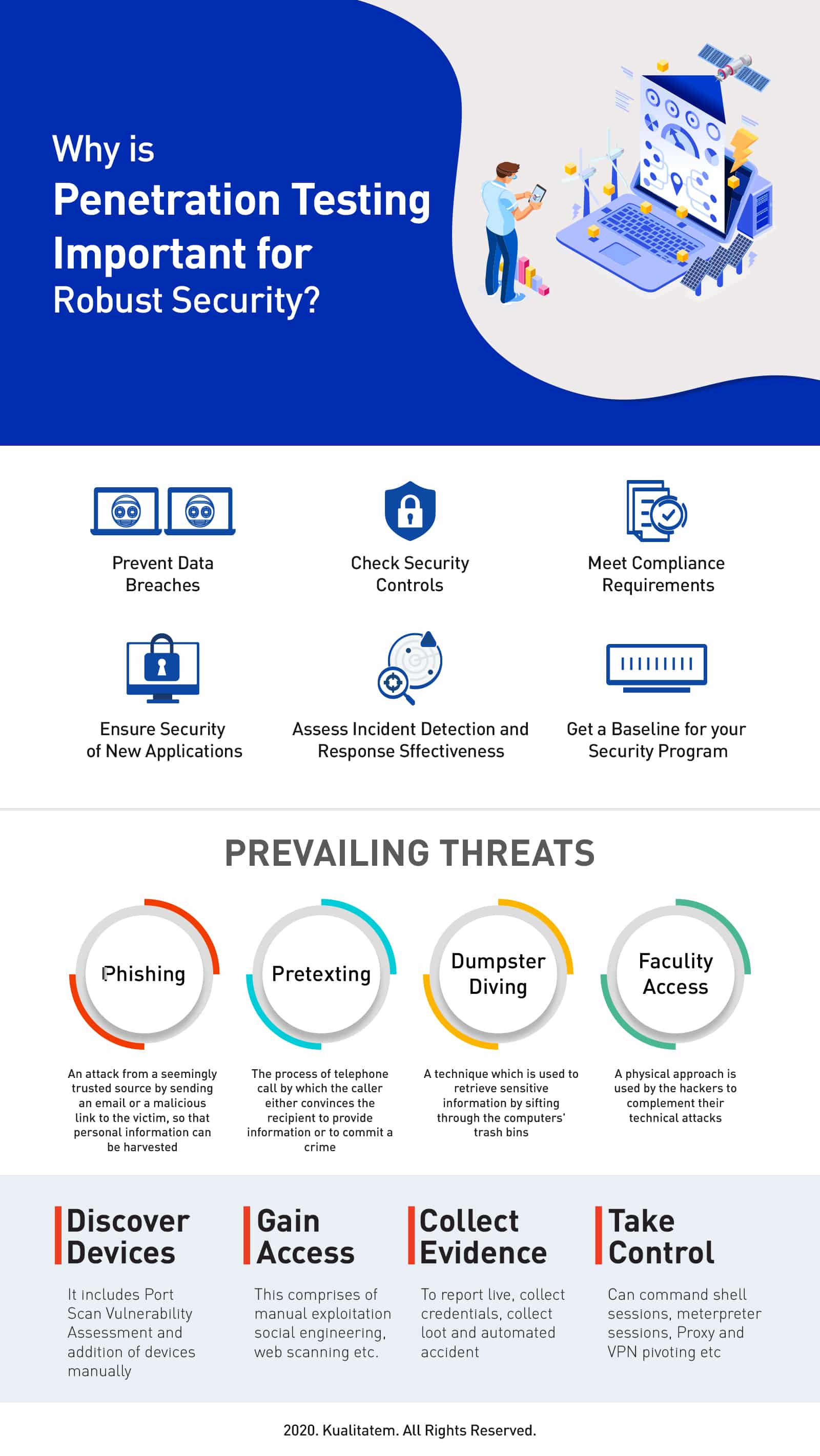Why Penetration Testing is Important for Your Security?

- June 3, 2020
- Maham Johnson
Penetration testing is a simulated attack against an application to identify vulnerabilities that can be exploited by attackers. It was previously performed on networks instead of apps running on networks. Penetration testing is performed against various types of code and systems used in your apps such as servers and APIs. The growing popularity of SSDL is saving lives because it gives security great importance at all stages of application development and maintenance. Ideally, penetration testing must be performed once every quarter. However, statistics suggest that one-third of organizations do it only once a year.
5 Phases of Penetration Testing
- Planning and Gathering: Define penetration testing goals and determine which systems and methods are to be used.
- Scanning: Use scanning tools to gather data and information on the target.
- Gaining Access: Steal data or increase permissions to expose vulnerabilities that can be exploited by hackers through cross-site scripting or SQL injection.
- Maintaining Access: Determine if the exposed vulnerability can be used to achieve a persistent presence in the application. Determine whether the attacker can sensitive data and cause more harm or not?
- Covering Tracks: Attackers like to stay undetected. Return the changes made to the system to a state that will not raise any suspicion.
After performing penetration testing, the penetration testing company presents all the details in the form of a report. These details tell us about vulnerabilities that were exploited, how long the tester was able to remain undetected, and whether any sensitive data was exposed. This information is used to remediate and improve the security of the web application to help protect against real attacks in the future.
Methods of Penetration Testing
-
External Testing
Testers only have the information on systems and assets that is available on the internet. With this, they try to gain access to the application and its data.
-
Internal Testing
In this case, the penetration testing company already has access to the application behind the firewall. Internal testing is done to ensure that the application and its data remain safe in case an employee goes rogue or credentials of an employee gets stolen.
-
Blind Testing
The penetration tester simulates an attack and is only provided with the name of the company.
-
Double-Blind Testing
Double-blind testing is similar to blind testing except, in this, the security team is not made aware of the simulation.
-
Targeted Testing
Penetration testers and the security team work together in a collaborative process of informing each other of the steps taken to attack the application and defend against the attack. It’s like a training exercise that provides real-time feedback.
Penetration Testing Approaches
In general, there are two approaches to penetration testing:
- Automated Testing
- Manual Testing
Automated Penetration Testing
Automated tools help provide fast results as compared to manual testing each component, service, and protocol. Manual testing is also difficult to perform. Automated penetration testing is useful in covering larger attack surfaces more easily by implementing the crawling of web applications to identify potential attack inputs. On the other hand, manual testing would consume a lot of time to guarantee the same coverage and comparison to known vulnerabilities.
However, it’s difficult for automated tools to accurately test in-house web applications and services, resulting in vulnerabilities to go undetected. In terms of efficiency, you can’t compare the processing capabilities of a machine to that of a human. A large number of payloads can be initialized and executed by automated tools, however, payloads for each scenario may not be tested correctly. Fuzz the application with multiple payloads and then wait for a reaction.
To ensure that automated tools are reliable, they undergo intensive product tests. You cannot show the same level of reliability on an individual penetration tester. These tools generate quick reports and have graphical features such as charts for effective visual data comprehension. Most of these tools are usually free but they lack support or warranty.
Manual Penetration Testing
Automation is not the ultimate solution. In fact, in many cases, manual testing is the way to go. Automated tools are poor at dealing with logical vulnerabilities. These tools lack the understanding of the scope and flow of the application necessary to identify any security issues. This is where experienced and certified security professionals are needed to exploit and validate all the potential security concerns. Also, because of false negatives and positives, automated tools can create a false sense of security or lack of security. These inaccuracies exist because of tools’ lack of validation capabilities that are essential to identify true security findings. Automated tools are reliable, but without regular and meaningful updates, they can let vulnerabilities slip through. They can not discover and identify the security threat if a new vulnerability has been introduced into the environment without a known category. Manual testers can create their exploit depending on the vulnerability and situation. This enables the execution of comprehensive testing methodology that automated tools will fail to detect.
Through comprehensive reporting, testers can describe the affected assets, supportive evidence, risk rating, data collected, exploits used, vulnerabilities found, and mitigation recommendations. Custom reports can be very helpful in understanding the infrastructure, application, or device. The scope and size of the engagement are the two main determinants of manual testing costs. No matter how high this cost is, no organization can afford to lose their customers and their data in an attack.
Penetration testing isn’t always a smooth process. But it’s necessary if you want to create a secure application that takes care of your reputation and sensitive data.












